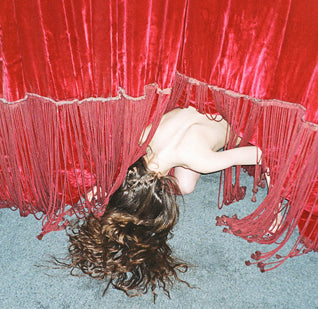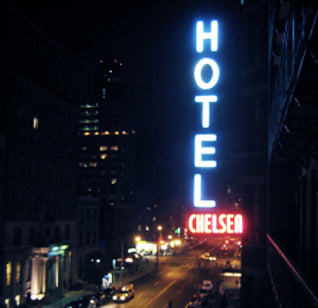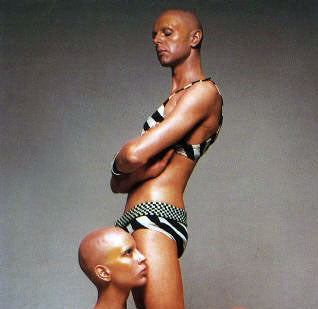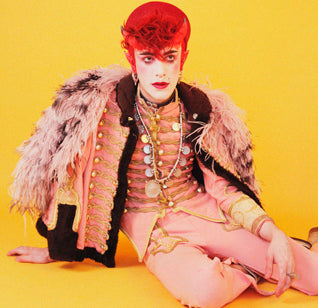THE RISE OF THE CURATOR / FALL OF THE CRITIC
How the celebrity curator is taking over the art world
by Jamie Tennent
In the art market today, there’s one question that keeps being asked: “What is the purpose of the gallery?” A challenging space for new ideas, a platform for voices yet unheard, a place for discussion and shifting paradigms or, in our ‘entrepreneurial society’ another money making venture to sell a lifestyle?
For whatever reason, be it a post Reagan-era shift in attitudes or relentless cuts to arts funding, the latter is what we’re being left with. Scores of galleries are gradually becoming new exercises in celebrity branding – the MoMA exhibited Bjork’s work to get crowds lining up behind a name we can all recognise. In the world of financial risk analysis, why give a platform to a new name when an old one will bring the best returns.

The Pompidou Centre received big crowds and a lot of press (good and bad) for its Jeff Koon Retrospective.
The curator, ever the retiring figure organising behind the scenes, is now the figure head of the theme-park exhibit – the roller coaster might be exciting but you know you’ll never get hurt. In a survey by Frieze, Iwona Blazwick, critic and director of the Whitechapel Art Gallery summed up this new role: “The last 40 years have marked the rise and proliferation of curators, collectors and architects specializing in making museums into powerful corporate brands that are intended to provide mass entertainment, generate tourism or solve social problems.”
Klaus Biesenbach, director of MoMA and the curatorial eye behind the Bjork retrospective, that took 15 years to produce, won’t lose his job. As much as the press protested, the queues snaked “out of the door and down the block” and when the gallery is a business, it’s numbers that matter.

MoMA’s Björk Retrospective Disaster, curated by Klaus Biesenbach (Right).
Losing a curator like Biesenbach, however maligned, can be detrimental to a gallery too. The curator is now a celebrity in his own right, he has an international network and a social media fan base of his own. If Hans-Ulricht Obrist instagrams the show, 94,000 people know about it straight away.
Here is where the critic should come in, acting as the arbitrator between the business and art, between the money and the substance, but critics no longer hold the place they did. Dave Hickey said the good ones died out: “Most of my younger colleagues, the art critics who should be in the ascendant today, died of AIDS in the 1980s. Those that survive are academics or tabloid celebrity geeks”, but that’s not the whole story.

Respected art critic, Dave Hickey said he quit the art world because “It’s no longer fun or honorable and had become an industry full of art dealers, curators, academics and PR driven critics whose jobs now lie in maintaining, if not inflating, the value of investments and playing it safe for.”
Technology has made the critical space so accessible that it’s hard to know who to listen to. With company’s desperation to ‘trend’ we’re all expected to come up with an opinion and share it worldwide – and why should a company listen to the critics when the audience it wants flooding between its doors are yelling out what they want to see, hashtagged and ready to search.
In his book, ‘Ways of Seeing’ Ossian Ward wrote this: “With so many voices and visuals competing for our attention, it’s a wonder that that we can filter out any sense in our daily existence at all, especially given our near-continuous interactions with the internet, the television, the smartphone, the social media timeline and the 24-Hour news stream, not to mention the general claxons and clamour of city noise. More than ever before, looking has become a matter of Darwinian survival. Only the strongest images make the grade”. This image-driven culture has led us down a dangerous route, there are a lot of media entities that won’t take a story, however interesting or well written, if it doesn’t come with engaging imagery. The public isn’t looking for the newest subtle ideas, they’re looking for the big pictures that entice them to click. For the MoMA, it was the big name.
Now, the artist shouldn’t be just be ‘artistic’ – using that word carefully – but to get a show exhibited they should be a rock-star, filling us with social media awe. Are we interested in the thought behind Damien Hirst’s crystal skull or are we just interested in it being a crystal skull?

Tate Modern's Damien Hirst Retrospective was the most visited solo show in the gallery's history. Artwork: A Thousand Years by Damien Hirst.
So what should our galleries stand for? The anti-elitist in me says that they are our galleries, they should be there to engage the public and that listening to this new public voice is an important part of bringing the gallery space out of the hands of the few. Surely good ticket sales mean galleries are acting as a more democratic space, not run and lauded over by the select in-crowd? But when the driving force behind exhibits are ticket sales, emerging artists lose out and exploration of new ideas risk coming to fruition.
In our current best-seller art world scene, the curator has become a cultural superstar responsible for bring in the crowd, leaving the gallery exhibition to become rife for glitter PR backed entertainment looking to impress a mass audience in search for a quick fix. With less room for innovation, is the rise of "star curator" a marking of the end of any possible avant-garde?




































